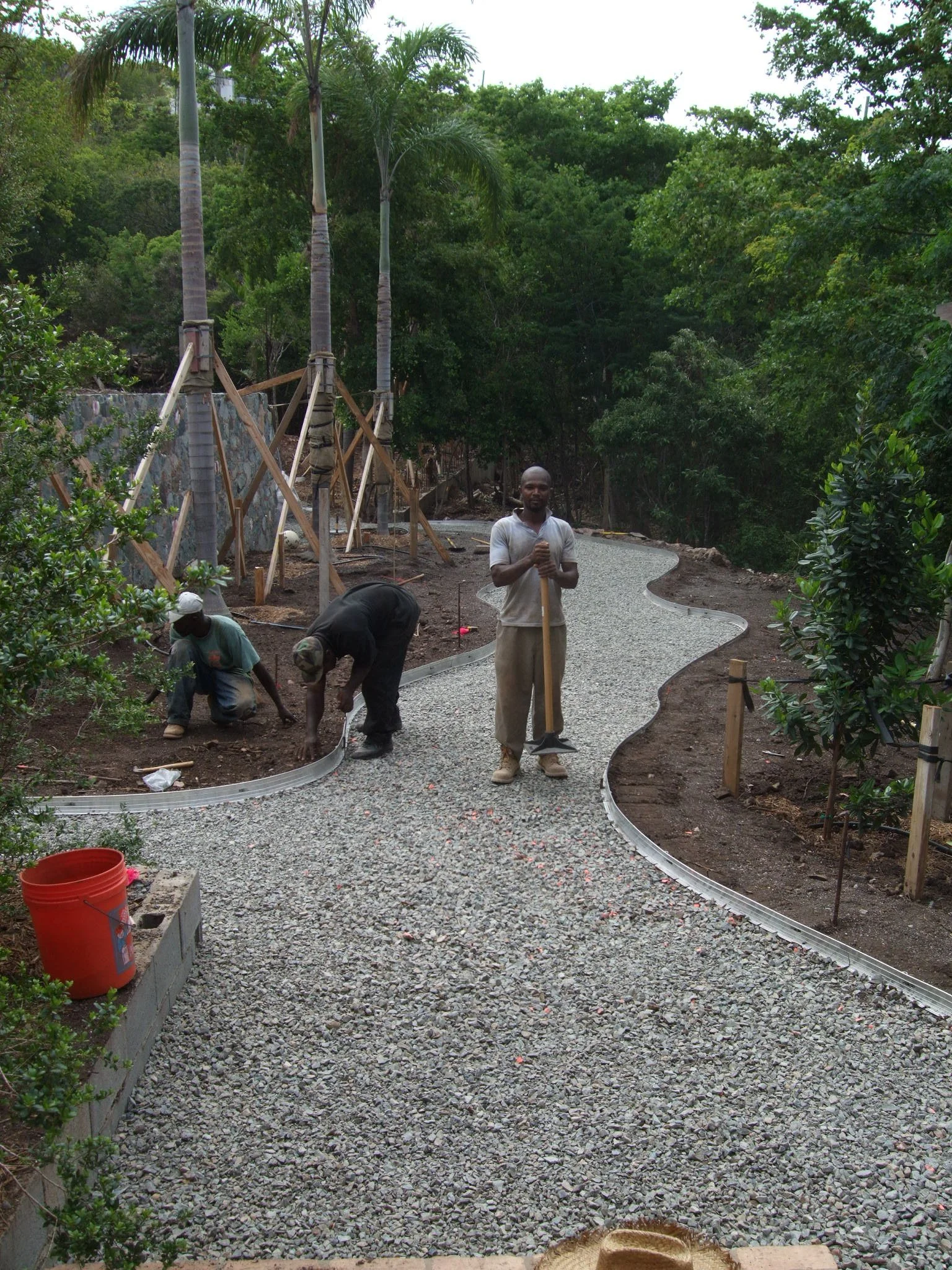BEACH GARDEN VILLA
ST. JOHN, U.S. VIRGIN ISLANDS
PROJECT STATUS | BUILT
PROJECT BACKGROUND
Design/build landscape design project for a beach home on Chocolate Hole Bay, near a salt pond with a mangrove and a coastal plant community. Services included the development of a hardscape and landscape design, the identification and protection of more than 75 coastal plant species existing on site, and their incorporation into several garden areas with the addition of other plant species that are typical of this area of St. John Island or adaptable to these conditions.
The architect for the house is Michael Milne of Barefoot Design Group. We were hired when the home was under construction with many decisions for the site already made. The site was highly disturbed and needed immediate protection. The design was developed in sketch form because we were asked to resolve all issues on-site and move quickly into plant and materials procurement and in-house installation with our own crew.






















THE CONCEPT
These drawings illustrate the axial approach of the house with meandering paths winding through decks and wet/moist garden areas, to maximize the property's potential. The project is divided into phases, with Phase One completed and Phase Two focusing on stormwater management using bioretention design. A driveway concept is presented, featuring concrete bands for vehicle wheels, ensuring permeability and a seamless connection with the natural surroundings.
PRELIMINARY CONCEPT
The architect had planned an axial approach to the house. To respect that desire, our preliminary sketch shows a forecourt that forced a skewed view to the house in contrast to a series of surprises and meandering paths along the decks and wet garden areas to make full use of the property.
PHASING DIAGRAM
We implemented only Phase One. Phase Two was meant to collect all stormwater in two bioretention swales siding the driveway down to the house before it would make its way into the low woodland area surrounding the Salt Pond plant community, which was to be addressed in Phase Three.
DRIVEWAY CONCEPT
One option presented for the long drive was to pave with concrete only two bands for the vehicle wheels so that the center and sides would remain permeable to stormwater.
THE WATER MOIST GARDEN
A retaining wall was needed to separate the floating decks and boardwalks overlooking the wetland plant community below from the sound garden and more formal areas.








APPROACH TO HOUSE: BEFORE|AFTER
We implemented the design using our landscape crew, in close coordination with the other contractors since large coconut and other palms had to be planted before building and site construction would be completed.



PATH TO THE HOUSE
The approach to the house was changed on site from rectilinear to curvilinear, more meandering, using a crushed gravel base and aluminum edging
We installed over the gravel base a surface layer of finely crushed limestone. We wanted to match in color and texture the coral stone tiles used to clad the whole exterior walls of the house
DESIGN REVISIONS
Even before we changed the path to curvilinear, the formal row of foxtail palm planting shifted to offset the stone walls already built on site to separate garden areas. The two segments rather than a row acknowledge the different topography







PLANTING AND STAKING PALMS
UPPER POOL TERRACE
The pool was installed on the second floor of the house in a large terrace with a trellis and view of the ocean. The canopy of tall coconut palms planted behind the seating area immediately screened the house's view on the hillside. On the oceanside, instead, the house now seems to be totally cantilevered over the reconstructed coastal beach plant community.






Rather than using a railing, we created a planter with bromeliads to discourage people from leaning and approaching the edge too closely.
Architects often add narrow planters around building walls to conceal grading challenges and level differences expecting that the landscape architect will specify nice plants there. This approach, however, tends to further separate the building from its natural surroundings, perpetuating the outdated concept of foundation planting. In this case, native Agave missions plants were utilized effectively within the planters.adding a bit of wildness that was authentic to the site.






















